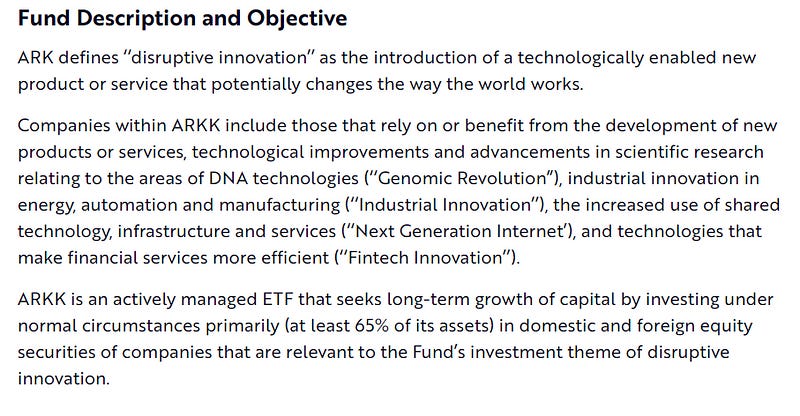Things to look out for when choosing ETF
Some pointers when choosing your first ETF investment

If this is your first time investing in an asset directly on a stock exchange, great job on taking the first step! ETF is a great stepping stone towards becoming a seasoned investor. If your end goal is to be able to select your own company to invest in, you can see ETF as a training ground for that.
In this article, we will explore what are some of the things you should know before investing in an ETF and what to take note of.
Investment Objectives
When you invest in an ETF, you would have to take a broader lens on things. Do not try to study each of the individual holdings in an ETF, but understand how are these companies selected. To find out how an ETF selects its company, you simply have to read the investment objectives in the fund fact sheet.
This investment objective should explain to you how ETFs select the companies to be part of the basket. Understanding this is important because it forms the foundation of why you may want to invest in it. One way to check if your understanding of the investment objective is correct, is to look at the underlying funds and see if it matches the investment objective to your understanding/expectation.
Here is an example of an investment objective of the iShares S&P 500 Health Care Sector UCITS ETF:

Here’s another one from the ARK Innovation fund:
Expense Ratio
For all the benefits you get from investing in ETF, it is not free of charge. The expense ratio that you see in the ETF fund fact sheet basically means how much the investment company is charging you for their services. In general, the more work that is required from them, the more expensive the charges would be. This means that funds that simply track an index would usually be cheaper than actively managed ETFs where the investment company have to select the company themselves. However, it is worth noting that two ETFs with the same objective may have a different expense ratio.
When choosing an ETF, the expense ratio is something that you shouldn’t ignore. The expense ratio can directly affect the asset from the ETFs and it will be charged regardless of how the ETF performs.
Fund size
When it comes to investing in ETFs, there is an added risk of ETFs closure. This usually happens when the ETF does not earn enough revenue to cover its expenses. In the previous section, you learnt about the expense ratio- that is basically how an ETF earns money. One way to reduce the risk of ETF closure is to ensure that the ETF is earning enough to stay afloat. To gauge this, you can look at the ETF Asset under Management (AUM) or the fund size. There is no magical number of how big the AUM of ETF should be but you can compare it with other ETFs in the market to have a sense of how it fares.
Historical Track records
Before committing to an ETF, you should also look at the past performance. Although past performance doesn’t indicate future performance, it can give us confidence and that is very important too. Having a healthy track record is a good indicator that the investment objective that the fund has chosen to adopt is working. But whether it will work in the future, only time will tell. If the ETF is relatively new, you can check out the other ETFs that are managed by the same fund manager to have a sense of how good this manager is. This is especially important for ETFs that do not track any index.
For index tracking ETF, it is worth checking how far does the performance of the ETF deviate from the actual index that it is tracking, the smaller the tracking error, the better.
Conclusion
The factors that we listed here are what I personally look out for first when I am choosing an ETF. This may not be a comprehensive list, but it should be enough to get you started. If this is your first time investing, don’t aim to make a perfect decision. You don’t have to understand every single detail about an ETF to get started. You just have to know enough to understand what you are getting yourself into.
